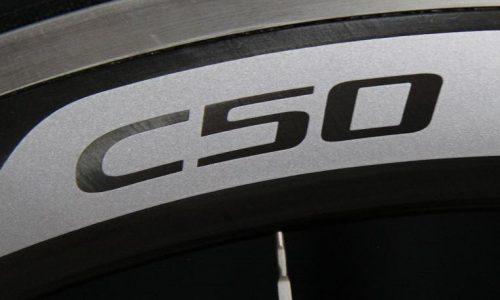When it comes to upgrading your bike, you have a lot of different options. You could use lighter fast wheels, electronic gearing, or even swap out your finishing kit for a carbon equivalent. However, many of our amazing readers and viewers ask us if it is worth upgrading your bearings.
If you follow professional cycling, you would have encountered some professionals switching to ceramic bearings in their bottom brackets or even on their jockey wheels. They can save lost wattage in friction and are very durable, but they don’t come without drawbacks.
In this article, we’re going to be telling you everything you need to know about ceramic bearings by discussing:
- What Are Ceramic Bearings?
- Where Will You Find Ceramic Bearings On A Bike?
- What Are The Pros And Cons Of Ceramic Bearings?
- What Difference Do Ceramic Bearings Make?
- Are Ceramic Bearings For You?

What Are Ceramic Bearings?
Ceramic bearings in recent years have become very popular. They offer some great advantages for professional and amateur riders.
Ceramic bearings have been designed to replace the steel bearings that we have been using for years in all kinds of mechanical equipment. They are typically made of Silicon Nitride, but companies have been known to use other materials, such as Alumina or even Zirconia.
The injection molding, dry pressing, or slip-casting process shapes them. After they are dried and sintered before being assembled into a bearing system.
Ceramic bearings can help your bike perform and are, in some cases, even more, durable than your typical steel bearings. They are not cheap to buy and do require some looking after, but they can make a difference for the right rider.

Where Will You Find Ceramic Bearings On A Bike?
You will find ceramic bearings in many places when it comes to the bike. They typically live in places with a lot of rotation or heavy loads. They are commonly seen on the bottom bracket, jockey wheels, pulleys, headset, and even on your bike’s hubs.
These parts are where you see the most rotation and where the pressure can be very heavy. More companies are catching on to ceramic bearings, and the market is going to grow much larger in the future.

What Are The Pros And Cons Of Ceramic Bearings?
Now let’s get to the good stuff. What are the pros and cons of ceramic bearings? Here’s what you need to know.
Pros
Lightweight
The first thing to mention about ceramic bearings is they are incredibly lightweight. Although the difference is minimal, when it comes down to it, you might save a few grams with some ceramic bearings, but it’s literally nothing.
Reduced Rolling Resistance
Then you have reduced rolling resistance. This is where when the bearings are spinning, they are much smoother, which reduces friction and, in turn, can make you quicker.
Increased Durability
Then we have increased durability. Ceramic bearings from a good manufacturer will be able to last much longer. This will not only save you money and time in maintenance, but you will also get more out of the components.
Reduced Corrosion
Ceramic bearings don’t corrode like steel bearings do. This means they have the ability to last much longer and work much better in wet and humid conditions increasing durability further, especially if you’re an off-road cyclist.
Cons
Cost
The first thing you will notice when it comes to researching ceramic bearings is the price. They are very expensive, and you might spend a lot of money when it comes to replacing a few components on your bike.
A lot of this comes down to the price of materials and the in-depth process of putting them together.
Installation
A disadvantage of ceramic bearings is that they are generally more complex to install than other upgrades, such as changing a seat post or a set of wheels. A good example is if you were to be changing wheel bearings, they would require pressing.
Fragile
Ceramic bearings, although very durable, are much brittler than steel bearings. This can cause them to be more fragile if they are knocked badly or not looked after properly. They are generally 30% less resilient under impact compared to steel.

What Difference Do Ceramic Bearings Make?
So now you’re probably questioning how much difference do ceramic bearings make. Well, to be brutally honest, not a vast amount.
If you were to change the bottom bracket, wheel bearings, and jockey and pulley wheels, you would generally be looking at a saving of 6-9 watts of rolling resistance.
This is a small amount of wattage for a general day-to-day rider, and to gain these benefits, you could be spending up to and over $500. It’s not a cheap upgrade to make. There’s not a huge amount of difference in it unless you’re a professional.
Are Ceramic Bearings For You?
If you are a professional racer who has fairly deep pockets and needs every advantage you can get, then you are going to want to look into ceramic bearings. Their impact could be the difference between a win and a loss in a race through energy saving or reduced rolling resistance.
If you are a casual weekend warrior just going out on club runs, then these might not tick the box for you. They will give you slightly better performance, and you will get less time between servicing, but we are not sure they are entirely worth it for the cost.

A Final Note
Ceramic bearings are excellent. If you can afford to make the purchase and feel they will offer the value you want, then why not.
We do question if they are worth it for the day-to-day cyclist. We hope you enjoyed our article and now know if ceramic bearings are for you.

Robbie Ferri has spent years working in a bike shop, has worked with industry leading brands on product creation, has been a semi pro athlete, and is a fully qualified strength and conditioning coach. He has broken World Records, bikepacked all over the World and raced ultra distance at a top-level.


